
The Goddard Space Flight Center (GSFC) is a major NASA space research laboratory located approximately 6.5 miles (10.5 km) northeast of Washington, D.C. in Greenbelt, Maryland, United States. Established on May 1, 1959 as NASA's first space flight center, GSFC employs approximately 10,000 civil servants and contractors. Named in recognition of American rocket propulsion pioneer Robert H. Goddard, it is one of ten major NASA field centers. GSFC is partially within the former Goddard census-designated place; it has a Greenbelt mailing address.

The University of Puerto Rico, Mayagüez Campus (UPRM) or Recinto Universitario de Mayagüez (RUM) in Spanish, is a public land-grant university in Mayagüez, Puerto Rico. UPRM is the second-largest university campus of the University of Puerto Rico system. In addition to its status as a land-grant university, it is also a member of the sea-grant and space-grant research consortia. In 2009, the campus population was composed of 12,108 students, 1,924 regular staff members, and 1,037 members of the education staff. In 2013, the student population remained relatively steady at 11,838, but the instructional faculty dropped to 684. In the second semester of 2019 around 12,166 students were enrolled. By the end of the academic year 2022-2023 there were 10,071 students enrolled. UPRM has been accredited by the Middle States Commission on Higher Education (MSCHE) since 1946.
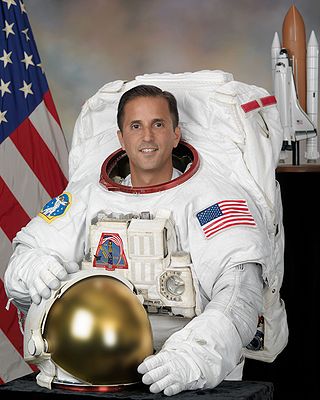
Joseph Michael Acabá is an American educator, hydrogeologist, and NASA astronaut. In May 2004 he became the first person of Puerto Rican heritage to be named as a NASA astronaut candidate, when he was selected as a member of NASA Astronaut Training Group 19. He completed his training on February 10, 2006, and was assigned to STS-119, which flew from March 15 to 28, 2009, to deliver the final set of solar arrays to the International Space Station.
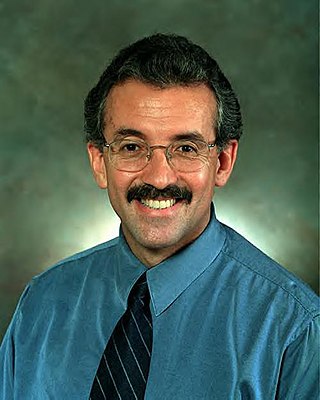
Pedro Rodriguez is an American scientist who is the Director of a test laboratory at NASA and inventor of a portable, battery-operated lift seat for people suffering from knee arthritis.
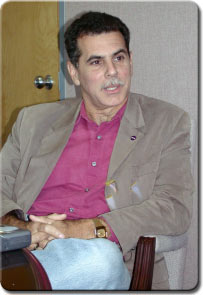
Miguel Rodríguez is the Chief of the Integration Office of the Cape Canaveral Spaceport Management Office.
Hispanics in the United States Naval Academy account for the largest minority group in the institution. According to the academy, the Class of 2009 includes 271 (22.2%) minority midshipmen. Out of these 271 midshipmen, 115 are of Hispanic heritage. In 2004, of the total of 736 female midshipmen, 74 (10%) of them were of Hispanic descent.

Lissette Martinez, is an electrical engineer and rocket scientist. She is the head of the Wallops Electrical Engineering Branch and the lead electrical engineer for the Space Experiment Module program at the Wallops Flight Facility (WFF) which is part of NASA's Goddard Space Flight Center (GSFC) where she is responsible for the testing of ground and flight hardware. She is a notable alumni at the University of Puerto Rico at Mayagüez.
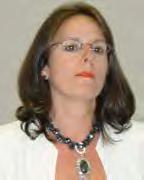
Miriam Rodón Naveira is an environmental scientist from San Juan, Puerto Rico, working at the federal government of the United States for which she was awarded a Silver Medal for Superior Service and a Suzanne Olive EEO and Diversity Award both by the EPA. She was also the first Hispanic woman to serve as branch chief of the EPA's National Exposure Research Laboratory (NERL) and later the first Hispanic woman to become deputy director of NERL's Environmental Sciences Division. Working at NASA since 2000, she now oversees research to enhance collaboration within DFRC, as well as with external entities, in support of the integrated use of remote sensing instruments in aerial platforms.

Olga D. González-Sanabria is a Puerto Rican scientist and inventor. She is the highest-ranking Hispanic at NASA Glenn Research Center, and a member of the Ohio Women's Hall of Fame. González-Sanabria, Director of the Engineering and Technical Services, is responsible for planning and directing a full range of integrated services including engineering, fabrication, testing, facility management and aircraft services for the Glenn Research Center. She played an instrumental role in the development of the "Long Cycle-Life Nickel-Hydrogen Batteries" which helps enable the International Space Station power system.

Mercedes Reaves is a Puerto Rican research engineer and scientist. She is responsible for the design of a viable full-scale solar sail and the development and testing of a scale model solar sail at NASA Langley Research Center in Virginia.
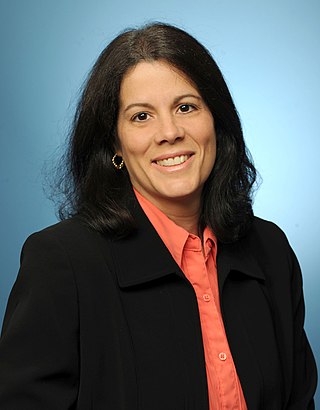
Amri Hernández-Pellerano is a Puerto Rican electronics engineer and scientist who designs, builds and tests the electronics that will regulate the solar array power in order to charge the spacecraft battery and distribute power to the different loads or users inside various spacecraft at NASA's Goddard Space Flight Center. She designed the power systems electronics for the Wilkinson Microwave Anisotropy Probe (WMAP) mission. WMAP is a NASA Explorer mission spacecraft which measures the temperature of the cosmic background radiation over the full sky with unprecedented accuracy.

Adolfo Figueroa Viñas is the first Puerto Rican astrophysicist at the National Aeronautics and Space Administration (NASA) and is an expert in solar and space plasma physics at the Heliophysics Science Division. As a staff scientist his research interests include studying plasma kinetic physics and magnetohydrodynamics of the solar wind, heliosphere, shock waves, MHD and kinetic simulation of plasma instabilities, and turbulent processes associated with space, solar and astrophysical plasmas.

Goddard Space Flight Center is NASA's first, and oldest, space center. It is named after Robert H. Goddard, the father of modern rocketry. Throughout its history, the center has managed, developed, and operated many notable missions, including the Cosmic Background Explorer, the Hubble Space Telescope, the Tracking and Data Relay Satellite System (TDRSS), the Lunar Reconnaissance Orbiter, and the Solar Dynamics Observatory.

Enectalí "Tali" Figueroa-Feliciano is a Puerto Rican physicist and professor at Northwestern University who pioneers the development and application of transition edge sensor (TES) detectors to experiments for detecting dark matter, neutrino interactions, and for X-ray astronomy.
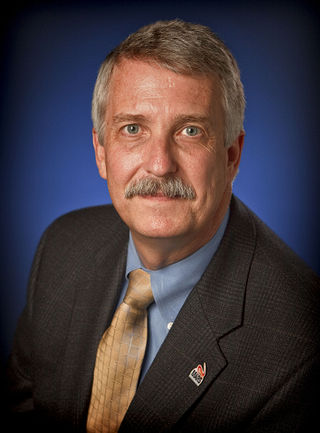
Doug McCuistion was the director of NASA's Mars Exploration Program. He is now the chief operating officer of X-Energy, LLC, a nuclear energy company developing high-temperature gas-cooled reactors located in Rockville, Maryland.
Yajaira Sierra-Sastre is a Puerto Rican materials scientist, educator, and aspiring astronaut. She was part of a six-person crew, and the only Hispanic, selected to participate in a four-month-long, Mars analog mission funded by NASA. Sierra-Sastre aspires to become the first Puerto Rican woman to travel to outer space.

Carlos Del Castillo is a scientist who, in 2004, became the recipient of the Presidential Early Career Award for Scientists and Engineers (PECASE) award, the highest honor bestowed by the United States government on scientists and engineers beginning their independent careers. Del Castillo was the Program Scientist for the Ocean Biology and Biogeochemistry Program at NASA Headquarters, in Washington, D.C. He is currently the Chief of the Ocean Ecology Laboratory at NASA Goddard Space Flight Center. Previously, among other things, he was a member of the Senior Professional Staff and Section Supervisor with the Space Department of the Johns Hopkins University Applied Physics Laboratory.










